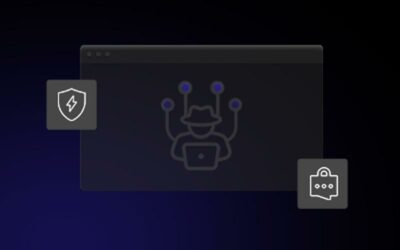Cyber attacks are on the rise. As more internet users are utilizing digital wallet services, and a larger number of employees are using cloud computing while working from home, data breaches are happening more frequently than ever before.
Phishing is one of the most common forms of cybercrime when internet scammers use email, mobile, or social media platforms to steal your private information. It’s essential to know some of the ways that you can safeguard yourself from phishing and protect your assets. These phishing protection tips are recommended by an expert criminal appeals lawyer in Philadelphia. Both professionals and everyday internet users should know these four crucial tips to prevent phishing.
KNOW THE DIFFERENT PHISHING TYPES
It’s important to realize that we keep some of our personal information online when we use digital services. This can be bank account info, Social Security numbers, or other personal information such as our name or birthdate. Because of this, each internet user is responsible for their cybersecurity.
These days, more data breaches are occurring than ever before. A Risk Based Security report revealed that the number of data breached accounts grew to 36 billion this year – a 141 percent increase compared to last year. This number was also the largest amount of data breaches since 2005. It also shows us that more cyber threat actors are committing cyberattacks now.
Because of this, you must know the two main types of phishing:
- Cyber attackers will lure you to a third-party, data harvesting site. Here, bots can extract your data and steal your sensitive information.
- Cyber threat actors will trick you into installing malware on your device through a click-in download. Cyber attackers develop malware to give unauthorized access to your device–leading to stealing your info.
Knowing these two types of phishing and how a cyber attacker can lure you into stealing your information is a critical step in safeguarding yourself against phishing attacks.
NOTICE PHISHING TACTICS
After understanding the main methods that cyber attackers use, it’s vital to cover the more subtle ways a phishing attacker can bait you into giving away your information. These can be a cyber attacker’s use of language, as well as offering up unusual benefits to you that seem too good to be true. These phishing tactics include:
- Offering a large, unexpected amount of financial reward
- Giving you an urgent deadline to respond
- Asking for personal information such as your bank account or Social Security number
- Alerting you with a false alarm that you’ve been “hacked,” an account has “expired,” or other untrue dangers
These are all methods that phishing scammers use to offer up an ideal scenario for you. These, however, are false scenarios that exist only to lure you into giving away your financial or personal information to cyber attackers. While spam filters and certain software do help, ensuring that you notice these phishing tactics adds an extra degree of safety.
USE EMAIL SECURITY PROTOCOLS
Using security protocols within your email domain is one of the fundamental ways to upgrade your safety against phishing. Enabling a global email security standard within your network such as Sender Policy Framework (SPF) properly detects phishing spammers from sending emails on behalf of your domain. It also lets you specify which emails are allowed to be authenticated and sent through your email domain.
Using DomainKeys Identified Mail (DKIM) is another crucial security measure. This allows senders to connect their various emails with the domain name, adding a digital signature and giving the emails authenticity. The email recipient can then verify the DKIM signature and be assured of its security.
Implementing these security protocols saves you time, stress, and just might prevent a future phishing cyber attack.
INSTALL ANTI-PHISHING SOFTWARE
Fortunately, there is a wide selection of anti-phishing software that is available to users. Similar to anti-virus software, anti-phishing software helps to scan links and emails for potential back door logins to your computer. They help intercept and discard emails that are carrying possible malware downloads via attachment or link, as well as preventing malicious attacks against your computer’s network.
There are multiple examples of anti-phishing software available to download, including:
- Brandshield Anti-Phishing
- Avanan
- Barracuda Sentinel
- Sophos Email
- Mimecast
Ensure that you look into these services to see which one is right for you to prevent phishing. Each software has tools that can monitor your network and upgrade your cybersecurity.
With the amount of cybercrime growing, it’s essential to know the basics of phishing. Safeguarding your personal information takes just a few simple steps and is vital to ensuring your safety. With these four tips, you can prevent phishing and enhance your cybersecurity.




